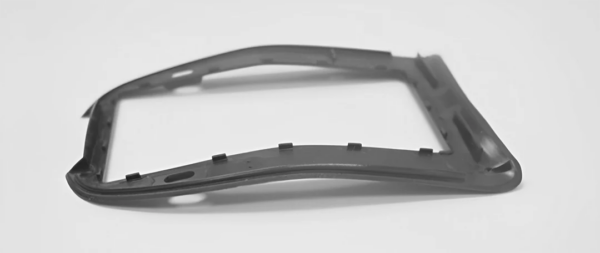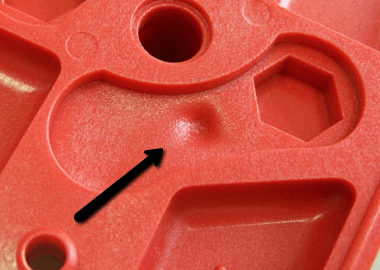3 Common Injection Molding Challenges and How to Solve Them

Effective troubleshooting in injection molding helps reduce reject rates by identifying the root causes of defects and addressing them efficiently.
When a molded part is rejected, it is normally due to one of three criteria: dimensional stability, warpage or appearance. Always, the first step to injection molding troubleshooting is to be able to name the defect correctly; the second step is to identify where it comes from.
Troubleshooting Size Problems
One of the most common problems in the injection floor is that a part comes out “right” directly after molding, and then, after storage, suddenly has the wrong dimensions. A diameter that was verified a couple of hours after molding may no longer fit, or an assembly dimension may no longer fit within range.
This most frustrating fact has to do with a defect called shrinkage, a behavior natural to polymers and specially to semi-crystalline polymers. It is related with the viscous component of the visco-elastic behavior, and it is described by the ability of molecules to flow relatively to each other, and to arrange when energy is available.
The main cause for shrinkage is the availability of “free energy” within the polymer to enable molecular movement. This energy comes from heat in the injection molding process. So, basically, whenever there is heat available, molecular rearrangement will happen.
Therefore, any parameter related to heat should be checked out:
- Mold temperature.
- Melt temperature or heat coming out from shear effects in the injection molding machine should all be minimized.
The more energy you put inside the process, the largest the effort you need to take it out.
Also, allowing for the part to cool constrained within the mold by increasing the ejection time helps with relaxation and therefore reduces the need for the molecules to “bounce back” and shrink right after molding.
You may also read: Injection Molding Factors Influencing Part Quality
Molded Flat, Staying Flat
Another frustrating result when standing in front of an injection molding machine is to see how parts start to bend, almost right in front of your eyes, and you end up with a curved component that has little to do with the geometry carved in the mold.
This defect is called warpage, and it is rooted in residual stresses. Warpage is the parts solution trying to alleviate in-molded stresses.

Warpage effects. Courtesy of Prototool.
Residual stresses may have to origins: thermal or flow-induced. To tackle thermal induced stresses, it is important that the cavity temperature on both sides of the mold is similar. It is helpful to remember a basic premise: the part should “feel” the same amount of heat flowing out in every direction. So if a side of the mold (for example a core) is hotter, you may want to increase water temperature in the other side of the mold, to balance the response of the part.
Finally, remember that the part will always warp in the direction of the hotter mold-half. So it will actually point out the half that needs to be heated up.
As for flow-induced stresses, they tend to increase with larger flow-lengths and with larger gradients in temperature between the injection gate and the end of the filling pattern. Increasing injection speed and mold temperature may help with this.
You may also read: 3 Tips for Cooling Design in Injection Molding
Surface Defects

Sink marks deform the surface of a part in areas with thick geometry. Uneven cooling of the material causes these deformations. Courtesy of Hawk Ridge Systems.
There are all sorts of surface defects that may arise in injection molding. One of the most common are sink marks. This sink marks originate in areas of the molded part where you find high concentration of material.
As plastics have such low heat transfer capacity, the heat is able to flow out of the part only very slowly when surrounded by a skin of solidified polymer. These hot spots enable molecular movement, and this molecular movement will in turn enable crystallization.
When forming crystals, molecular chains occupy less space, and therefore tend to “pull” the part surface towards the center. The solution is to “push” more material into these areas.
The most effective parameter to do so is increase packing pressure. Use several steps in the packing profile and increase the pressure in the first step over a couple of seconds. Beware of holding pressure high for too long, though, as it may induce in-molded stresses as well.
